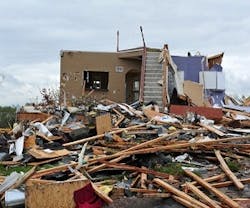Building Practices, Codes, and Tornadoes
Researchers speculate that damage from storms like the EF5 tornadoes that ravaged the South in April could be reduced by better building practices and the enforcement of existing codes.
Researchers and a rapid assessment team supported by the National Science Foundation (NSF) claim that much of the damage could be linked to inadequate connections between building members such as trusses, roof rafters, and walls.
“We often found inadequate or no connections at critical locations in structures, such as attaching the trusses or rafters to the supporting walls, or sill plate to the foundation,” says Rakesh Gupta.
Gupta is a professor of wood science and engineering in the College of Forestry at Oregon State University, an expert in wind loading and structural resistance, and was a member of the NSF research team.
“Time and again we’ve seen that such connections are often inadequate under extreme loading conditions,” Gupta says. “For instance, trusses that were just toe-nailed to the walls often failed in the high winds, the roof blew off and that allowed the rest of the building to collapse. And in some cases there were no anchor bolts between the bottom plate and foundation, allowing the whole building to shift off the foundation.”
The final report from the NSF is not yet available, but Gupta has stated that it would be possible to build structures that could resist EF5 tornadoes – but that it is not economically feasible.
